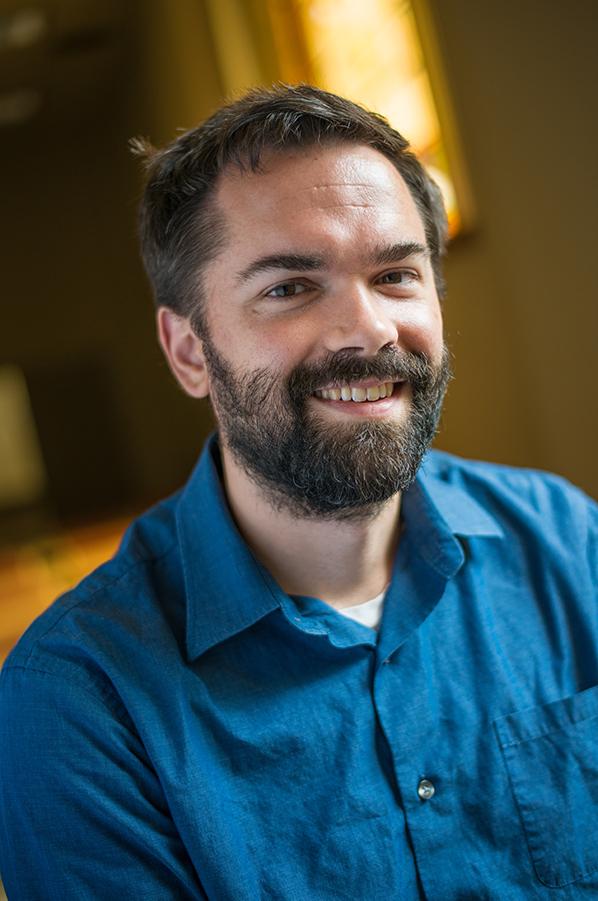Lehigh University team led by industrial and systems engineering professor Frank E. Curtis developing new algorithms to improve resilience in Department of Energy’s Grid Optimization Competition

Credit: Ryan Hulvat for Lehigh University
We don’t think much of electricity or the wonders of its generation and distribution until a particularly bad storm descends and suddenly we need our cars to charge our phones, our grills to cook our food, and if we’re lucky, our still-connected friends to lend us their hot showers.
The reality is that our electric grid represents a delicate balance.
Energy demand–whether for a month or a morning–must be accurately forecasted. Power plants generate the electricity that will supply that expected demand. Substations step up the voltage of that electricity so it can travel efficiently over long distances through transmission lines. That voltage is then stepped down at another substation to allow distribution lines to transport power throughout neighborhoods and communities.
The grid is an intricate, highly complex system. One that has gotten even more complex with the increasing use of renewable energy resources like wind and solar. At some point, something will go wrong. A line will get cut. A generator will fail. There might be a hurricane or a cyberattack.
How do you quickly correct for that failure to avoid a cascading blackout?
The Advanced Research Projects Agency-Energy (ARPA-E) at the Department of Energy is looking for better answers to that question, in the form of new algorithms. And Frank E. Curtis, an associate professor of industrial and systems engineering at Lehigh University’s P.C. Rossin College of Engineering and Applied Science, and his team think they might have a solution.
“Using an active set optimization method, we think we can exploit the idea that when you lose something, maybe not a big generator, but when you lose certain lines, things don’t always change that much,” says Curtis, whose research focuses on the design, analysis, and implementation of numerical methods for solving large-scale nonlinear optimization problems. He is also affiliated with two of Lehigh’s new interdisciplinary research institutes, the Institute for Cyber Physical Infrastructure and Energy (I-CPIE) and the Institute for Data, Intelligent Systems, and Computation (I-DISC).
His team’s idea won them a $250,000 support grant in December from ARPA-E, as part of the agency’s Grid Optimization (GO) Competition. The competition was announced last summer, and comprises a series of challenges meant to modernize grid software in key areas such as the optimal utilization of conventional and emerging technologies, management of dynamic grid operations, and management of distributed energy resources. The ultimate goal is to develop a more flexible, resilient, cost-effective grid.
The first challenge is to develop an algorithm that can address the grid’s security-constrained optimal power flow, or SCOPF, problem.
It’s a uniquely difficult optimization problem. There’s a huge number of variables–power generation, voltages, phase angles, transformer power limits–and many difficult constraints.
“You’re basically using physical equations to describe what happens on these lines, and they’re relatively complicated mathematical expressions of how power flows,” says Curtis. “But what really makes the competition difficult is this idea of accounting for each contingency. You have to figure out, ‘Okay, if I lost this line or this generator, how would it affect all of my variables? How would that affect every decision I’ve made?’ For every contingency you consider, it basically multiplies the size of the problem.”
The challenge, which started in November, brings together teams from other top institutions such as Georgia Tech, Penn State, Northwestern University and the University of California, Berkeley; national laboratories including Argonne, Lawrence Berkeley, and Lawrence Livermore; and private-sector companies.
Teams must submit their code in April for the first of two trial events, and they will be judged on how quickly their algorithms can solve a hypothetical problem with multiple contingencies.
“The whole competition is, How do you get the best answer you can in a limited amount of time that works well for various types of networks?” says Curtis.
ARPA-E will release more data sets between now and August that will help teams further refine their code. The agency will hold the final evaluation event in November, after which they’ll announce the top 10 finishers in multiple divisions. Those teams will get a share of $4 million in prize money.
Awards are great, but the problem itself is enticing.
“This type of optimal power flow problem is fairly well-known in the optimization community as a challenging problem to solve, which is exciting,” says Curtis. “And while I’m not an expert when it comes to the power grid, I’m definitely in favor of renewable energy. But I can see the challenges in making them more of a reality, so the idea of being able to contribute something to that work is also pretty exciting.”
###
Related Links:
- Lehigh University Faculty Profile: Frank E. Curtis
- P.C. Rossin College of Engineering and Applied Science
- ARPA-E Grid Optimization (GO) Competition
Media Contact
Katie Kackenmeister
[email protected]
Original Source
https:/




